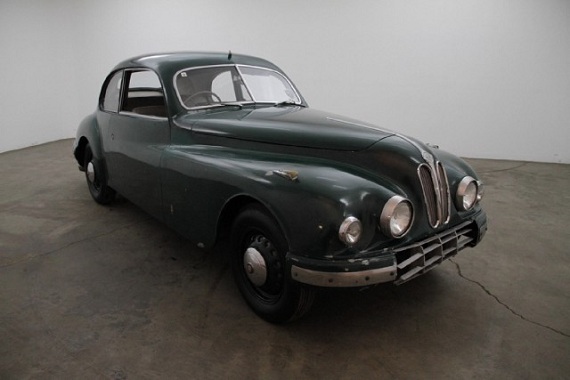The seller of the two recent fan-favorite Volkswagens has been in touch and lowered the price on both offerings; the GTi is now listed at…
Comments closedAuthor: Carter
While the Type 44 turbo quattro paved the way for the C4 platform, the brand new 100 and S4 were a real revolution for Audi. It needed it, too – Audi was in dire straights in the early 1990s and was nearly pulled from the American market all together. Audi needed a major update to its top of the line-ranging 100, which in 1991 effectively was still the same car with minor updates from 1984. Of course, Audi wasn’t going to completely walk away from the Type 44 and the crown jewel of performance, the 200 20V turbo quattro. So, in 1992 the “brand new” S4 was launched. Underneath it shared many parts with its sibling V8 quattro and the earlier 200 20V. Even inside it didn’t look much different from the concurrent V8 model. But step outside and an entirely new aerodynamic body cloaked the extremely capable motor and drivetrain. That motor – now with some minor updates that allowed for slightly more power than the 200 had enjoyed – would quickly become legendary for not only reliability but for specific power output; 400 horsepower is almost commonplace amongst modified versions; 500 horsepower isn’t unusual and above 1,000 isn’t unheard of. Despite the extreme tuning potential, go anywhere chassis and incredibly good build quality, these sedans are still a remarkable bargain in the classic German motoring market. While normally in a 10K Friday post I’d compare different models, today I’ve got four different examples of the same car to take a look at – which is the best bargain?
CLICK FOR DETAILS: 1993 Audi S4 on eBay
1 CommentAbout a week ago, Paul sent me a link to Daily Turismo which was reviewing this very Audi Coupe GT. In the comments were the all too predictable Audi stereotypes; nothing electric will work, it’s overpriced, not worth getting unless its a quattro, I didn’t maintain mine well and so it was unreliable, etc.. The truth about the GT could not be farther from those descriptions; those that have driven them almost always report enjoying the experience, and those that have owned them and have moved on still pontificate how great of a car they are. To me, it’s cars like this that exactly underscore what’s wrong with the e30 market – here’s a very nicely styled, classic GT car. It’s well balanced and fun to drive. For the purists, it’s a 5-speed and has a race-bred soundtrack. They’re notoriously long-lived, with many (including this author’s) well in excess of 200,000 miles. There simply isn’t much electronic equipment to break on them. Yet, even a shining example such as this can be had for only $2,500:
CLICK FOR DETAILS: 1986 Audi Coupe GT on Craigslist
6 CommentsWe’ve gotten some flak lately whenever we post a non-German car, so I fully expect to be reminded that the brand Bristol does, in fact, not originate from Germany. Okay, now that we’re over that hump, why is this heap of a Bristol here? Well, if you’re in the know, you already are aware why the Bristol 400 and 401 might make an appearance here; if you’re not, prepare for a bit of a history lesson. Post World War II, many British companies moved in to run German businesses or took advantage of some of the very advanced designs. Two in particular, Frazier-Nash and Bristol Aeroplane Company, involved themselves with BMW. Now, pre-World War II, BMW in truth wasn’t much of an automobile producer. However, BMW had great success with motorcycles especially in the early to mid 1930s, and the success of both Auto Union and Mercedes-Benz spurred BMW’s efforts in sports cars. They ended up producing some fairly stunning designs right before the outbreak of the war, including the Mille Miglia-winning 328 sports car. Featuring a lightweight body and stout 2 liter inline-6, the 328 was an instant fan favorite. The success of BMW’s sporting car designs didn’t go unnoticed by the British companies; notably, BAC decided to develop its “own” car based upon the BMW designs. They utilized the BMW 326 chassis and 328 engine to create a larger grand touring car than the 328 had been. Outside, park it next to a BMW 327 and the Bristol appeared to be nearly a identical copy. Bristol didn’t even bother to hide the lineage, proudly displaying the distinctive kidney grill BMW fans are so familiar with. While the 401 started to deviate the styling slightly from the 400 it replaced, outwardly early models just appeared to be slightly refined and still showed a very similar design to the BMW 327:



